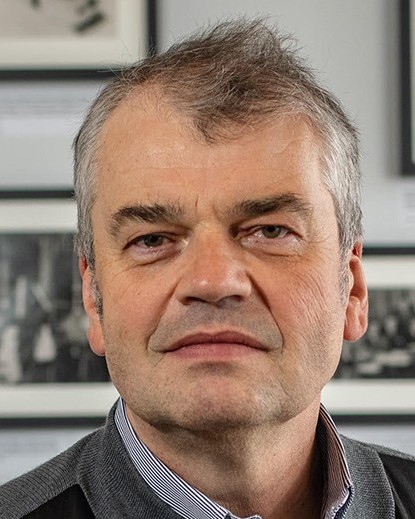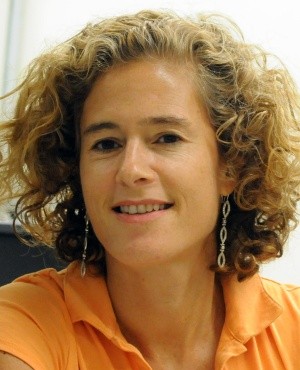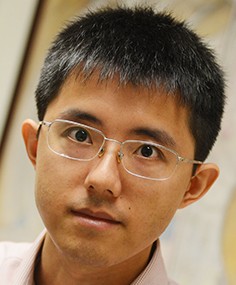Columbia’s theoretical and experimental optical experts explore the quantum nature of light and how it interacts with atoms, molecules, and quantum materials.
Understanding and exploiting these interactions will help us develop novel applications in information processing, communications systems, sensing, and metrology, and to engineer new laser sources, quantum detectors, and electronic devices.
Key Faculty
Latest News & Research
Honoree recognized for pioneering contributions to the fields of quantum and nonlinear photonics
Michal Lipson is a pioneer whose seminal research underpins the explosive growth and rapid commercialization of silicon photonics, a technology that uses optical rays to transfer data among computer chips. She spoke with Columbia Engineering about the joy of physics, putting all your eggs in one basket, and young female researchers taking charge of their careers.
Researchers propose a new approach—using a photonic-chip platform based on silicon nitride—to attain highly entangled photon states, essential to quantum computing and technology
Researchers use atomically thin materials—1/100,000 the size of a human hair—to manipulate the phase of light without changing its amplitude, at extremely low power loss; could enable applications such as LIDAR, phased arrays, optical switching, and quantum and optical neural networks
Using sophisticated optical microscopy techniques, Columbia engineers are first to demonstrate that sufficient strain in 2D material can yield single-photon emitters, key to quantum technologies and future photonic circuitry
Researchers at Columbia Engineering report today that they have developed the first nanomaterial that demonstrates "photon avalanching," a process that is unrivaled in its combination of extreme nonlinear optical behavior and efficiency.
Columbia researchers discover a new way to program light on an ultra-small scale
Columbia researchers engineer first technique to exploit the tunable symmetry of 2D materials for nonlinear optical applications, including laser, optical spectroscopy, imaging, and metrology systems, as well as next-generation optical quantum information processing and computing
Physics World covers a recent Nature publication from the Basov Lab.
The research groups of Christine Hendon and Michal Lipson have demonstrated a novel supercontinuum source that provides improved imaging performance.
One of 20 early-career researchers selected for the fellowship, Asenjo-Garcia is exploring how light and matter interact at the quantum level.
A new paper, "Dynamic control of photon lifetime for quantum random number generation," from Prof. Alexander Gaeta's Quantum and Nonlinear Photonics Group and Prof. Michal Lipson's Nanophotonics Group was published by Optica.
Visible-spectrum, compact, power-efficient, low-loss phase modulator is a breakthrough in integrated photonics; the device will improve LIDAR for remote sensing, AR/VR goggles, quantum information processing chips, implantable optogenetic probes, and more.
Six Columbia Quantum Initiative researchers joined Clarivate’s Highly Cited Researcher list this year. Here, we've compiled some highlights from 2021.
It’s a significant step in understanding these whirling quasiparticles and putting them to work in future semiconductor technologies.
For International Day of Light, meet some of the faculty who are continuing the university’s long legacy of light research.
The recipient of the 2022 Couillaud Prize is back in New York and has her sights set on building a super tiny new laser to advance quantum optics research.
Calculations from Ana Asenjo-Garcia and Stuart Masson reveal that any atom array is capable of bursting—a sign that atoms are syncing up.
The theoretical physicist is recognized for her work on light-matter interactions in ultracold atoms.
Using a time lens, Columbia Engineers resolve single photons 70x faster than other techniques, another step towards advancing quantum information processing.
Researchers at Columbia University and Politecnico di Milano have used an atomically thin material to build a device that can change the color of laser beams. Their microscopic device—a fraction of the size of conventional color converters—may yield new kinds of ultra-small optical circuit chips and advance quantum optics.
A new bidimensional semiconductor shows the highest nonlinear optical efficiency over nanometer thicknesses.
In work published with Columbia engineer James Hone, a Stevens team’s on-chip technology uses orbital angular momentum to encode more information into a single photon.
Columbia engineers invent a flat lens that exclusively focuses light of a selected color—it appears entirely transparent until they shine a beam of light with the correct wavelength onto it, when the glass turns into a lens.
Members of the Gaeta lab collaborate on a new device that opens the doors to applications in communication, quantum computing, astronomy.
Seven Columbia Quantum Initiative researchers made Clarivate’s Highly Cited Researcher list this year. Here are a few highlights from 2022.
With the Shuck Lab, Emma Xu is a co-inventor of a photon avalanching process that appeared on the cover of Nature.
In a significant advance for impactful technologies such as quantum optics and laser displays for AR/VR, Columbia Engineering’s Lipson Nanophotonics Group has invented the first tunable and narrow linewidth chip-scale lasers for visible wavelengths shorter than red.
The Electrical Engineering PhD student to talk about the new tunable laser platform he helped invent, the challenges of working with visible light, the importance of collaboration, and what he’s working on next.
Researchers in the US have created the first high-performance, tuneable and narrow-linewidth visible-light lasers that are small enough to fit on a photonic chip.
Gaeta is recognized for his role as founding editor-in chief of Optica and his commitment to excellence in the optics and photonics community.
New class of integrated nanophotonic devices—a world record in simultaneous control of all four optical degrees of freedom—can convert light initially confined in an optical waveguide to an arbitrary optical pattern in free space.
Scientists at Columbia Engineering, Berkeley Lab, and UNIST demonstrate that ultra-photostable avalanching nanoparticles are capable of unlimited photoswitching, lighting the way for advances in optical probes, 3D memory, and super-resolution microscopy.
Researchers in the US have shown how light travelling through optical waveguides can be converted into freely propagating light waves with arbitrarily shaped wavefronts – an achievement that the team claims as a first. Nanfang Yu and colleagues at Columbia University and at the City University of New York (CUNY), achieved the feat using “leaky-wave metasurfaces”.
A new class of integrated nanophotonic devices, based on leaky-wave metasurfaces, simultaneously controls all four optical degrees of freedom: amplitude, phase, polarization ellipticity, and polarization orientation.
Postdoc Ricardo Gutiérrez Jáuregui talks about studying light at Columbia and returning home to Mexico City.
Julia Robinson explains how quantum dots went from a theoretical prediction to everyday reality and earned their creators the 2023 Nobel prize in chemistry
Trovatello is recognized by the Italian Scientists and Scholars in North America Foundation for bridging macroscopic and microscopic nonlinear optics with layered semiconductors.
Six Columbia Quantum Initiative researchers made Clarivate’s Highly Cited Researcher list this year. Here are a few highlights from 2023.
The award will support her mentorship and outreach activities to early-career optics scientists.
Columbia Engineers pair vibrating particles, called phonons, with particles of light, called photons, to enhance the nonlinear optical properties of hexagonal boron nitride. The finding could lead to new ways of using light to modify materials. Learn more.
Researchers create a compact, all-optical device with the lowest microwave noise ever achieved for an integrated chip.
Research from the groups of physicist Dmitri Basov and engineer Alexander Gaeta were among the most downloaded physics papers last year.
Emanuil Yanev talks about his PhD work modifying 2D materials to push their light-producing limits.







